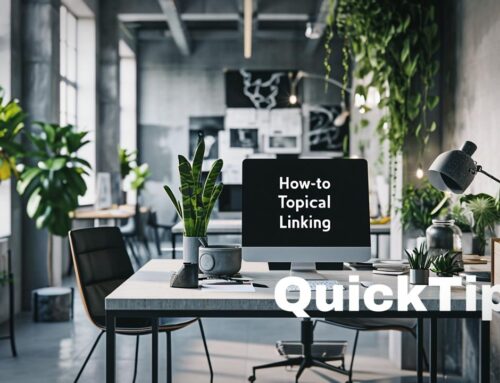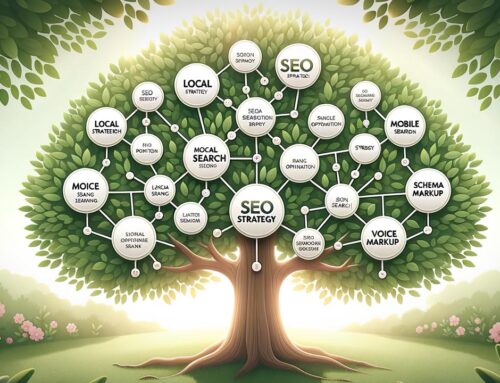Search Engine Optimization (SEO) might seem like a complex web of strategies, techniques, and algorithms that only tech wizards can understand. However, demystifying SEO is key to any business or individual looking to increase their online presence and reach a wider audience. This comprehensive guide aims to simplify SEO, providing valuable tips and tricks that can help your website rank higher on search engines such as Google, Bing, and Yahoo.
In this digital age, having a strong online presence is more critical than ever before. A significant part of establishing this presence involves ensuring that your website appears prominently in search engine results pages (SERPs). This is where SEO comes in. SEO, at its core, is a series of strategies and techniques designed to improve your website’s visibility in search engines. It involves various elements, such as keyword optimization, content creation, link building, and much more.
When utilized effectively, SEO can significantly increase your website’s traffic, contributing to higher conversion rates and, ultimately, increased revenue. Whether you’re a small business owner, a blogger, a digital marketer, or just an individual looking to increase your online visibility, understanding and implementing SEO strategies is crucial.
In this article, you will learn about the core aspects of SEO, including keyword research, content creation, on-page and off-page SEO techniques, technical SEO, and local SEO. We will provide practical tips and tricks that you can start implementing today to improve your website’s ranking on search engines.
This guide will also help you understand the role of SEO in digital marketing and how you can leverage it to drive organic traffic to your website. By the end of this article, you will have a solid grasp of SEO fundamentals, and you’ll be equipped with the knowledge and tools to optimize your website effectively.
Table of Contents
- Understanding SEO
- Keyword Research
- Content Creation and Optimization
- On-Page SEO
- Off-Page SEO
- Technical SEO
- Local SEO
- Frequently Asked Questions
- Final Thoughts
- Sources
Understanding SEO
SEO, or Search Engine Optimization, is the process of improving a website’s visibility to search engines. This involves making modifications to the website’s design and content to make it more attractive to a search engine. The goal is to have your website appear on the first page of search engine results for relevant queries, thereby driving more organic (non-paid) traffic.
Search engines like Google, Bing, and Yahoo use complex algorithms to crawl, index, and rank websites based on various factors. These algorithms are constantly changing and evolving, making SEO an ongoing process that requires regular updates and maintenance.
Keyword Research
Keyword research is the process of finding and analyzing search terms that people enter into search engines with the goal of using that data for a specific purpose, often for SEO or general marketing.
- Understand your niche: Before you start your keyword research, it’s important to understand your audience and the type of content they are interested in.
- Compile a list of relevant topics: Based on what you know about your niche, identify broad topics that are important to your business and use these topics to find specific keywords later.
- Use keyword research tools: Tools like Google Keyword Planner, Ahrefs, or SEMrush can help you find keywords related to your topics. These tools can provide information like search volume, keyword difficulty, and more.
- Study your competition: Look at the keywords your competitors are targeting. This can give you ideas for keywords that you may have overlooked.
- Refine your keyword list: Based on your research, choose the keywords that are most relevant to your business and have the right balance of search volume and competition.
Content Creation and Optimization
Creating high-quality, valuable content is crucial for SEO. When your content is engaging and provides value to your audience, it increases the chances of it being shared and linked to, which can improve your website’s SEO.
- Create quality content: Ensure your content is well-written, informative, and provides value to your audience. Avoid duplicate content, as this can negatively impact your SEO.
- Use your keywords: Incorporate your keywords naturally into your content. Avoid keyword stuffing, as this can lead to penalties from search engines.
- Optimize your headings: Use your keywords in your headings and subheadings where appropriate. This can help search engines understand the content of your page.
- Use internal and external links: Linking to other relevant pages on your website (internal links) or to reputable sources (external links) can improve the credibility of your content and improve its SEO.
On-Page SEO
On-Page SEO is the practice of optimizing individual web pages to rank higher and earn more relevant traffic in search engines.
- Meta Tags: Ensure that each of your web pages has a unique meta title and description that includes your targeted keywords.
- URL Structure: URLs should be SEO-friendly, meaning they should be simple, relevant, compelling, and include keywords.
- Image SEO: Use relevant images that are optimized for web use. Include your keywords in the image file name and alt text.
Off-Page SEO
Off-Page SEO refers to all the activities you do away from your website to raise the ranking of a page with search engines.
- Building Backlinks: This involves getting other websites to link back to your website. Backlinks from high-authority sites can significantly improve your website’s SEO.
- Social Media Marketing: Engaging with your audience on social media can drive more traffic to your website and improve your website’s SEO.
Technical SEO
Technical SEO involves optimizing your website for the crawling and indexing phase. With technical SEO, you can help search engines access, crawl, interpret and index your website without any problems.
- Mobile-Friendliness: With the rise of mobile search, it’s crucial that your website is mobile-friendly. Use responsive design to ensure that your website looks and functions well on all devices.
- Site Speed: Search engines favor websites that load quickly. You can use tools like Google PageSpeed Insights to check your site speed and get suggestions for improvement.
- Sitemap: A sitemap helps search engines understand the structure of your website. Ensure that your website has a sitemap and that it’s submitted to search engines.
- Robots.txt: This file tells search engines which pages on your site to crawl and which ones to ignore. Ensure that you’re not blocking search engines from indexing important pages.
Local SEO
Local SEO is the process of optimizing your online presence to attract more business from relevant local searches. This is especially important for businesses with physical locations or those serving a specific geographical area.
-
- Google My Business: Setting up a Google My Business profile is a crucial step for local SEO. This allows your business to appear in local search results and Google Maps.
- Reviews: Encourage your customers to leave reviews on Google and other platforms. Positive reviews can improve your local search rankings.
- Local Keywords: Incorporate location-specific keywords into your website content and meta tags.
- NAP Consistency: Ensure that your Name, Address, and Phone number (NAP) are consistent across all online platforms.
Frequently Asked Questions
Below are some frequently asked questions about Search Engine Optimization (SEO).
Final Thoughts
Demystifying SEO and implementing effective strategies can significantly increase your website’s visibility and drive more organic traffic. The world of SEO is ever-evolving, and staying up-to-date with the latest trends and techniques is key to maintaining and improving your search engine rankings.
However, the most crucial takeaway from this guide is that user experience is at the heart of modern SEO. Whether it’s the speed of your website, the quality of your content, or the mobile-friendliness of your pages, ensuring a smooth and enjoyable user experience is paramount. Keep your audience in mind as you implement these SEO strategies, and you’ll be on your way to a more visible online presence.
Remember, SEO is a marathon, not a sprint. It requires consistent effort and a keen understanding of evolving search engine algorithms. While the tips and tricks discussed in this guide can help, it’s important to remain patient and persistent in your SEO efforts.










